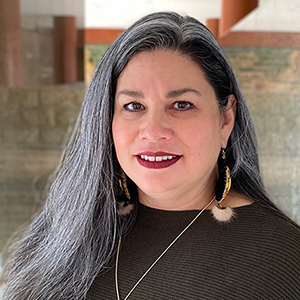The Board of Governors of the Federal Reserve System, the Federal Deposit Insurance Corporation, and the Office of the Comptroller of the Currency have released a Notice of Proposed Rulemaking (NPR) to strengthen and modernize the regulations implementing the Community Reinvestment Act (CRA). The proposal updates how CRA activities qualify for consideration, where CRA activities are considered, and how CRA activities are evaluated. It seeks to address the significant changes in the banking industry since the last substantive CRA updates in 1995 and 2005.
The proposal includes provisions that are tailored to the unique needs of Native communities. These provisions reflect feedback that stakeholders provided in engagement meetings and roundtables convened by staff from across the Federal Reserve System, including staff from the Center for Indian Country Development, and in comment letters submitted in response to prior agency proposals. To ensure that the CRA-modernization process continues to reflect stakeholder needs, the three banking agencies now seek additional feedback on a number of points, including the following issues affecting Indian Country.
Defining Native Land Areas to attract bank community development activities
The CRA encourages banks to conduct certain community development activities within designated geographies. However, the current regulations do not include a specific definition for certain community development activities in Native Land Areas. In the NPR, the agencies propose to define Native Land Areas to include the following geographic areas: Indian country, land held in trust by the United States for Native Americans, state American Indian reservations, Alaska Native Villages, Hawaiian Home Lands, Alaska Native Village Statistical Areas, Oklahoma Tribal Statistical Areas, Tribal Designated Statistical Areas, American Indian Joint-Use Areas, and state-designated Tribal Statistical Areas.
This geographic definition is broader than the statutory definition of Indian Country and also includes areas typically considered by the Bureau of Indian Affairs and the U.S. Census Bureau as Native geographies. The three banking agencies seek stakeholder feedback on the following question (numbered as it appears in the NPR):
Q28: To what extent is the proposed definition of Native Land Areas inclusive of geographic areas with Native and tribal community development needs?
Defining qualifying community development activities to benefit Native Land Areas
To help address the challenges specific to Native Land Areas, the agencies propose creating a definition for qualifying community development activities that are targeted to and conducted in these geographic areas, to include:
- Revitalization activities in Native Land Areas,
- Essential community facilities in Native Land Areas,
- Essential community infrastructure in Native Land Areas, and
- Disaster-preparedness and climate-resiliency activities in Native Land Areas.
To be considered a qualifying community development activity, essential community facilities, essential community infrastructure, and disaster-preparedness and climate-resiliency activities in Native Land Areas must do the following:
- Benefit or serve residents, including low- or moderate-income residents of Native Land Areas,
- Not displace or exclude any low- or moderate-income residents, and
- Work in conjunction with a federal, state, local, or tribal government plan, program, or initiative that benefits or serves residents of Native Land Areas, and not displace or exclude low- or moderate-income residents of such geographic areas.
Note that in addition to these place-based community development activities, other community development activities, such as affordable housing or economic development, could also qualify for consideration in Native Land Areas, provided that they otherwise meet the eligibility standards for those particular activities.
Separately, the three banking agencies propose that revitalization activities in Native Land Areas have a more-specific focus on low- and moderate-income individuals. For example, a bank’s purchase of a bond to fund an industrial revitalization project in a Native Land Area would qualify for consideration if the majority of the employment opportunities created by the project benefited low- or moderate-income residents and the activity met other required criteria. The revitalization activities also need to be undertaken in conjunction with a federal, state, local, or tribal government plan, program, or initiative with explicit focus on revitalizing or stabilizing Native Land Areas and a particular focus on low- or moderate-income households.
With this context, the agencies seek stakeholder feedback on the following two questions:
Q29. In addition to the proposed criteria, should the agencies consider additional eligibility requirements for activities in Native Land Areas to ensure a community development activity benefits low- or moderate-income residents who reside in Native Land Areas?
Q30. Should the agencies also consider activities in Native Land Areas undertaken in conjunction with tribal association or tribal designee plans, programs, or initiatives, in addition to the proposed criteria to consider activities in conjunction with federal, state, local, or tribal government plans, programs, or initiatives?
Reviewing the impact of community development activities
Under the current regulations and guidance, examiners from the three banking agencies consider both quantitative and qualitative aspects of a bank’s community development activities to determine whether these activities are innovative, complex, and responsive to identified community needs. However, without clear standards to measure innovativeness, complexity, or responsiveness, the evaluation relies heavily on examiner judgment. As a remedy, the agencies propose a list of impact-review factors for the qualitative evaluation of community development activities.* Compared with current practices, incorporating specific impact-review factors into the qualitative evaluation is intended to create a more standardized examination approach and therefore encourage banks to pursue activities that have a high degree of impact and responsiveness to the needs of low- or moderate-income communities.
To recognize the unique status, credit needs, and community development needs of Native and tribal communities, the agencies propose using eligible community development activities in Native Land Areas as an impact-review factor. Furthermore, the agencies propose that eligible community development activities that benefit Native Land Areas and meet other eligibility criteria be considered under this impact-review factor. For example, an affordable housing project that serves a Native Land Area or an activity in a Native Land Area undertaken with a community development financial institution would be included under this impact-review factor.
The agencies seek stakeholder feedback on the following related question:
Q38. For the proposed factor to designate activities benefiting or serving Native communities, should the factor be defined to include activities benefiting Native and tribal communities that are not located in Native Land Areas? If so, how should the agencies consider defining activities that benefit Native and tribal communities outside of Native Land Areas?
How to comment on these issues
The agencies seek comments about the current proposal to help them refine provisions to better serve low- and moderate-income communities. To provide feedback related to the questions detailed here, or on any other issues discussed in the NPR, submit a written comment on or before August 5, 2022. A comment-submission link and additional information on the NPR release are available on the Federal Reserve Board’s website.
Endnote
* These activities fall under the Community Development Financing Test, the Community Development Financing Test for Wholesale or Limited Purpose Banks, and the Community Development Services Test.
Michou Kokodoko is a project director in the Minneapolis Fed’s Community Development and Engagement department. He leads the Bank’s efforts to promote effective community-bank partnerships by increasing awareness of community development trends and investment opportunities, especially those related to the Community Reinvestment Act.
Vanessa Palmer is the data director for the Minneapolis Fed’s Center for Indian Country Development (CICD), where she leads efforts to collect, harmonize, and sustainably manage research-ready data in support of economic self-determination in Indian Country. In addition, she uses statistical tools and data visualization to support CICD’s applied research work.
Heather Sobrepena is the engagement director for the Minneapolis Fed's Center for Indian Country Development (CICD), where she serves as a key point of contact for tribal governments and Native organizations and individuals seeking to partner with CICD to advance their research and data needs and inform economic policy decisions. She is based at our Helena, Mont., Branch.







